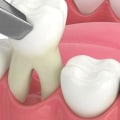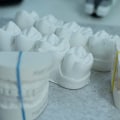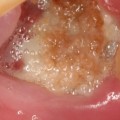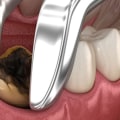Tooth extraction is a dental procedure that involves removing a tooth from its socket in the jawbone. It is usually done when a tooth is severely decayed, broken, or infected. Local anesthesia is used to numb the area around the tooth so that you don't feel pain. The dentist can loosen the tooth from the gum using a tooth extraction instrument called an elevator.
Your dentist will then place tweezers around the tooth and remove it from the gum. In some cases, the dentist may need to make incisions in the gums to access the tooth, especially if the tooth is badly decayed or has broken at the gum line. Once the tooth is extracted, the socket is cleaned and disinfected. In some cases, the dentist may also place a dental bone graft, which helps prevent bone loss in the jaw. Finally, stitches can be placed to help promote healing.
During the extraction process you will feel a lot of pressure due to the process of firmly balancing the tooth to widen the socket for extraction. The dentist will grasp a tooth with his forceps and then slowly but firmly swing it back and forth (side to side) as much as he wants. They may use a little force while doing so, but it will be controlled and deliberate. In addition, as far as possible, cut the periodontal ligament of the tooth (the ligament that goes from one tooth to another and connects the tooth in its socket).When it comes to resolving tooth damage caused by injury or decay, your dentist will always strive to preserve your natural tooth. There may also be times when the patient chooses tooth extraction because it is less expensive than restorative options and has a greater chance of obtaining a good result. When simple tooth extraction is considered appropriate, performing the procedure can offer many benefits.
This page contains an overview of the process a dentist uses when extracting a tooth for a patient. Although this is not always the case, there is a possibility that the tooth root has already been significantly resorbed, making extraction less difficult than it would have been at any time before. If you've already had a tooth extraction, call your dentist if you have a fever of 38 degrees Celsius (100.4 degrees Fahrenheit) or higher, drainage (pus) around the extraction site, or severe pain that doesn't improve with medications. Dentists and some dental specialists, such as oral surgeons and periodontists, can perform tooth extractions. But sometimes, extracting a tooth is the best way to get rid of an infection and get back to a healthy smile and life. A tooth that has undergone endodontic treatment is generally considered to be more brittle than a living tooth and, as such, is more likely to fracture during the extraction procedure. He will confirm that the tooth to be extracted has straight roots and a strong enough structure above the gums to be able to grasp and manipulate it.
As a second test, the dentist may use their fingers and press firmly on the tooth from side to side, just to make sure that that type of pressure doesn't bother the tooth either. We anticipate that, for most people, their inability to fully anesthetize (numb) their teeth would be the biggest obstacle when trying to perform an extraction on their own. For your information, as a numbness test, the dentist usually starts the extraction procedure by taking a semi-sharp dental instrument (often a lifter) and pressing it on the gum tissue that immediately surrounds the tooth.






